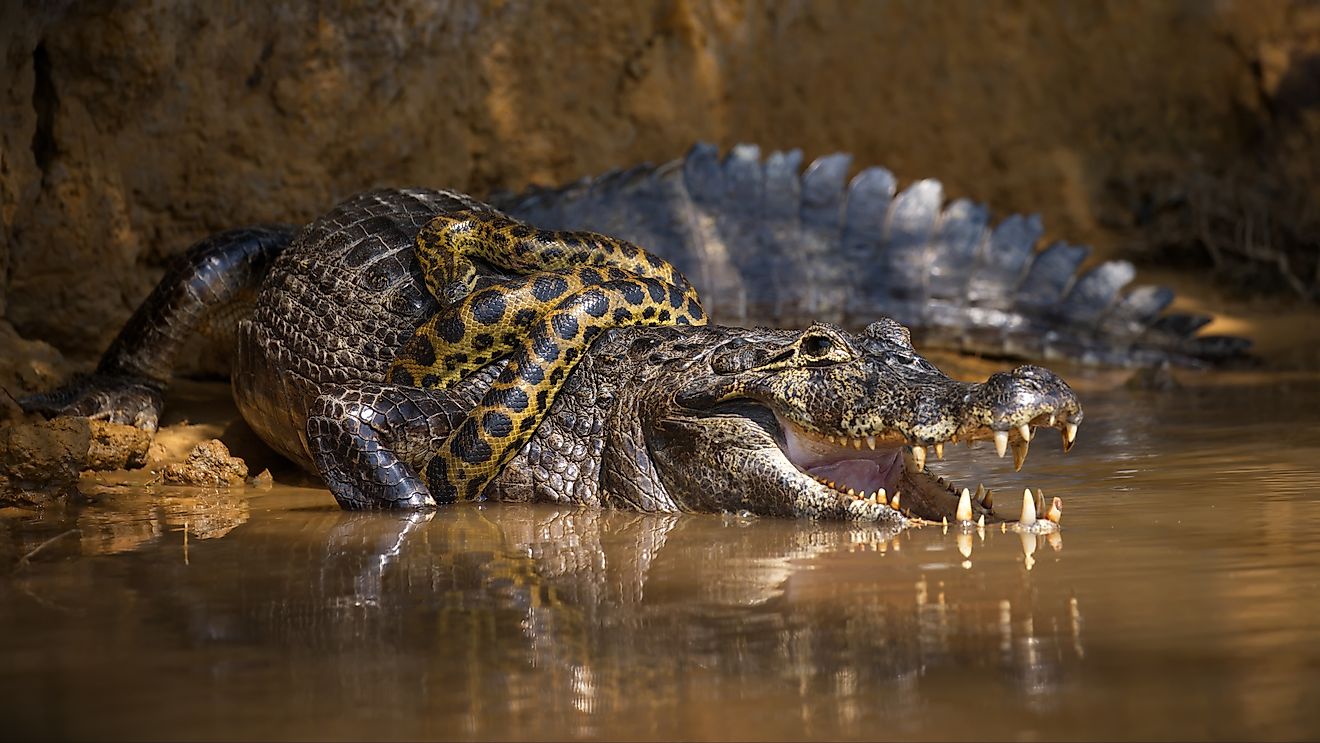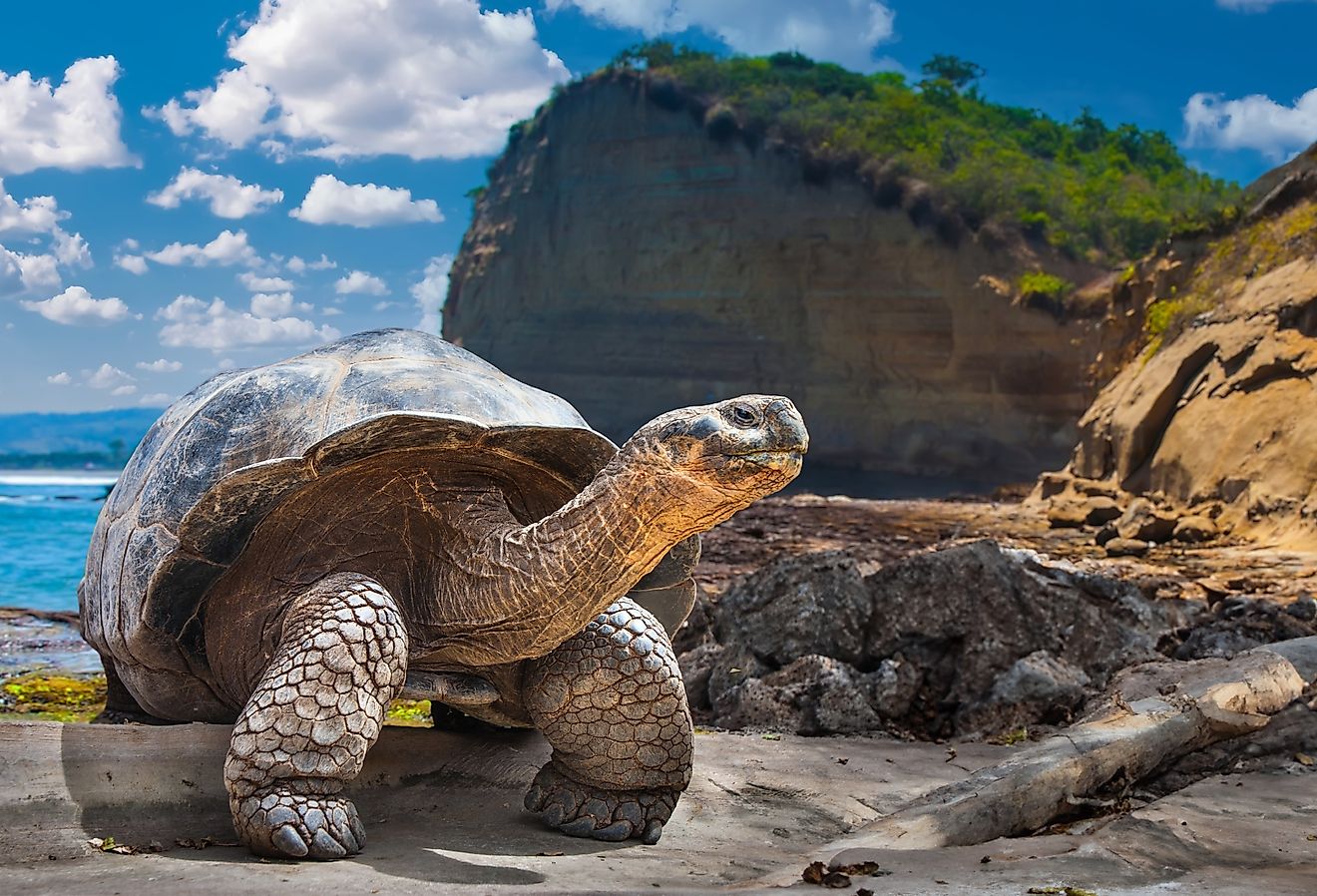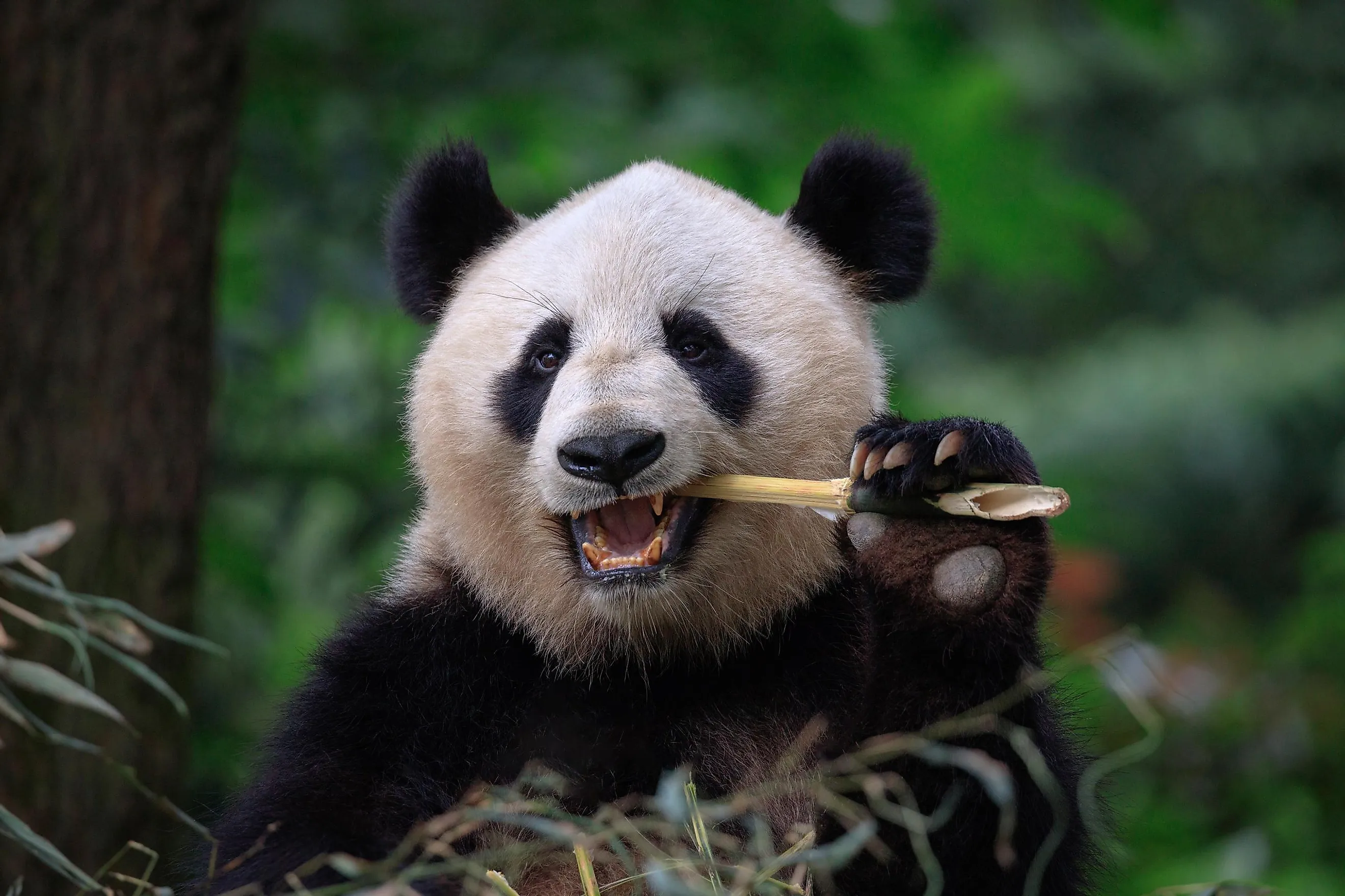
Panda
The panda, or giant panda, is one of the world's most loved and instantly recognizable animals. This loveable giant, a national symbol of both China and the World Wildlife Foundation, represents a nation and a cause. Unlike many other bears, these distinctive black and white super animals are not feared but rather adored. The giant panda (Ailuropoda melanoleuca), is an omnivorous mammal. It has an average life span in the wild of about 20 years, is four to five feet long, and weighs about 300 pounds on average. Despite its size and power, this national treasure is relatively tame and calm and even considered comical at times.
Appearance
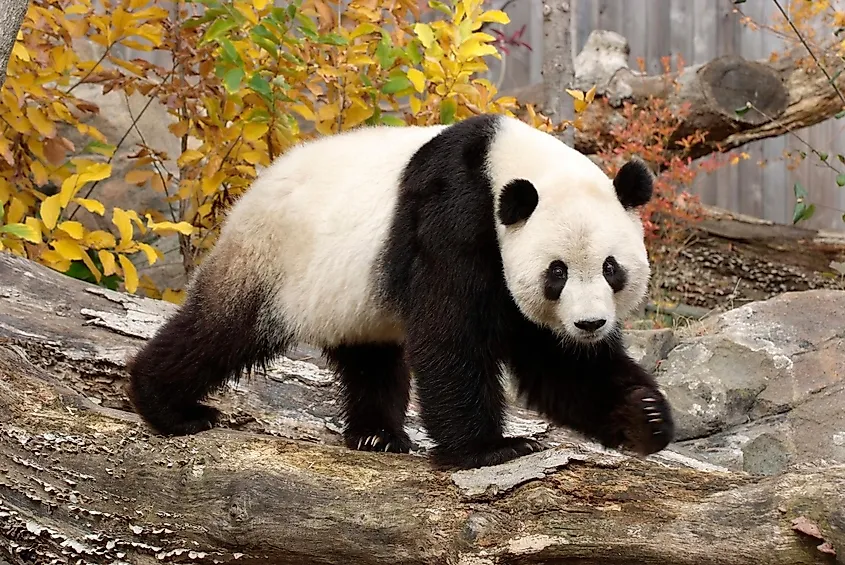
The Giant Panda is a large bear with a distinctive black-and-white color. They have white faces and white bodies but black legs and shoulders, small round ears, and black circles around their eyes. They have strong back legs that turn slightly inward, causing a waddle-like walk. They can, however, easily stand on hind legs and climb trees - although it appears cumbersome.
Range And Habitat
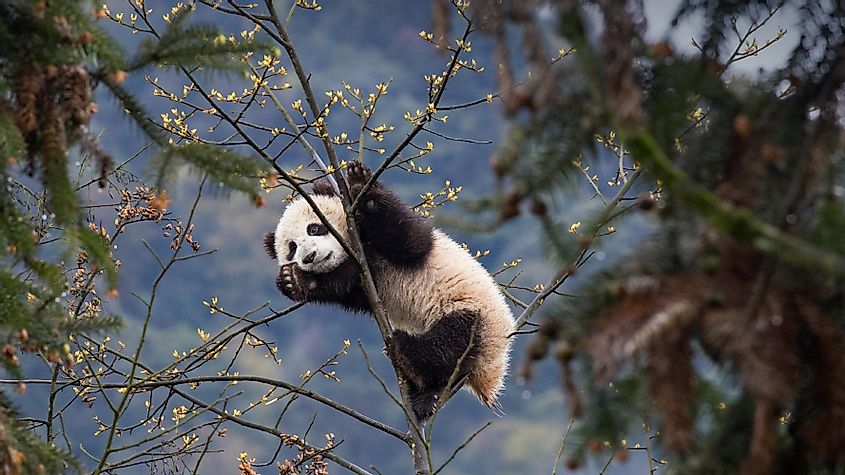
Pandas live in southwestern China in mountainous bamboo forests. Unfortunately, there are not very many that live in the wild, and the population is thought to be only around 1,500, making them very rare. According to the IUCN Red List, Pandas are considered 'Vulnerable' with an increasing population. This improvement is primarily due to widespread conservation and rehabilitation efforts throughout China. Human expansion has restricted the natural habitat of pandas to mainly the eastern range of the Tibetan Plateau within Sichuan, Shaanxi, and Gansu provinces. In total, the habitats occupy roughly 5,000 square miles.
Diet
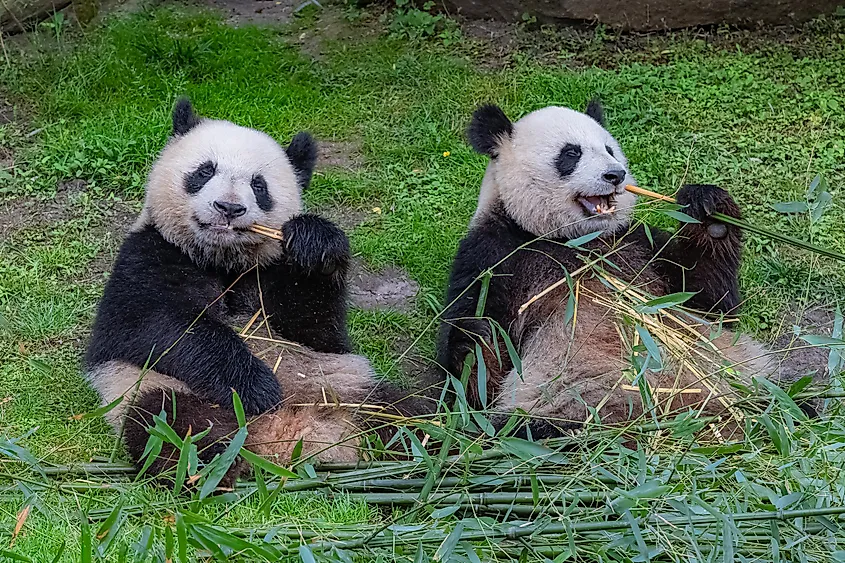
Pandas are omnivores, meaning they eat both plants and animals. However, they eat bamboo almost exclusively. They eat both the shoots and leaves of the bamboo plant, and it makes up 99 percent of their diet. Outside of bamboo, pandas do occasionally eat fish, small mammals, or other plants. Because their diet primarily comprises hard, fibrous plants, pandas have large, flat molars for chewing, crushing, and grinding. They can chew through bamboo as thick as one and a half inches. They also have large wrists, which help them hold the bamboo stems while they eat. Despite eating mainly bamboo, their digestive system actually has a hard time breaking down cellulose. Because of this, they eat a huge amount of bamboo, spending as much as 16 hours a day eating. Much of the cellulose is passed right through them, and they defecate as often as 50 times a day.
Social Behaviour And Reproduction
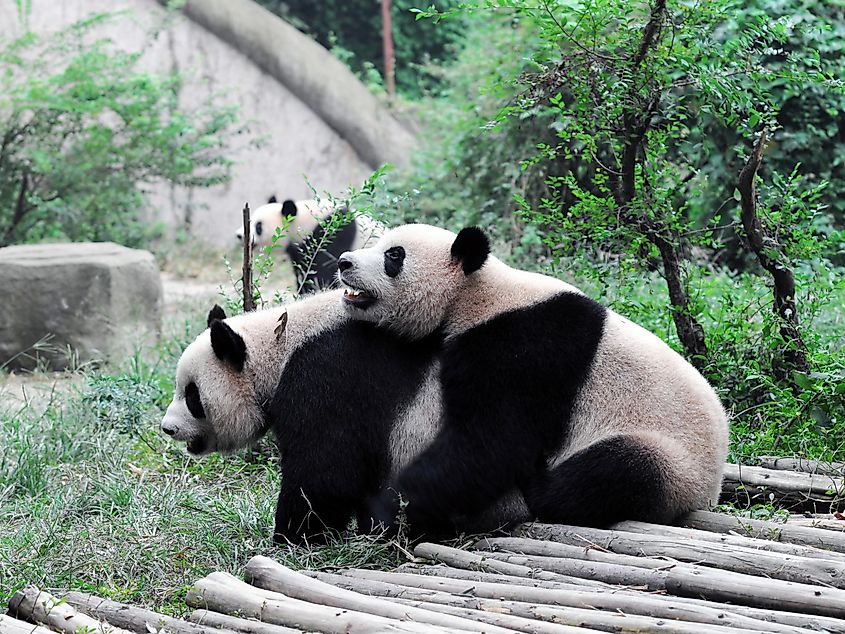
Pandas are generally shy creatures. Despite their size and strength, they keep to themselves and avoid populated areas. Pandas are also considered rather 'silly' and clumsy. Though they can climb upwards of 13,000 feet and are strong swimmers, they are also often seen tumbling over themselves, somersaulting, or doing handstands for relaxation. Pandas are generally solitary creatures and prefer quiet habitats far from humans. Each panda has its own territory, which is relatively small for its size, at 1.5 to 2.3 square miles.
Unlike other animals, pandas often have overlapping territories that they mark with scent glands. A panda will mark grass, trees, or rocks, which tells others of its identity. This scent is also used during mating season. Male pandas will track down females using thor scent marking and calls. Mating season is generally the only time pandas interact with one another. The mating season for pandas occurs in the spring, between March and May. Birthing season is usually in the fall, between August and September. During the mating season, male pandas sometimes become aggressive with one another. The gestation period of a panda ranges between 90 and 184 days, and a panda fetus is born at only 4 ounces in weight. In fact, pandas have the smallest babies of all placental mammals in comparison to the size of the mother. A baby panda is 1/800 of the weight of its mom.
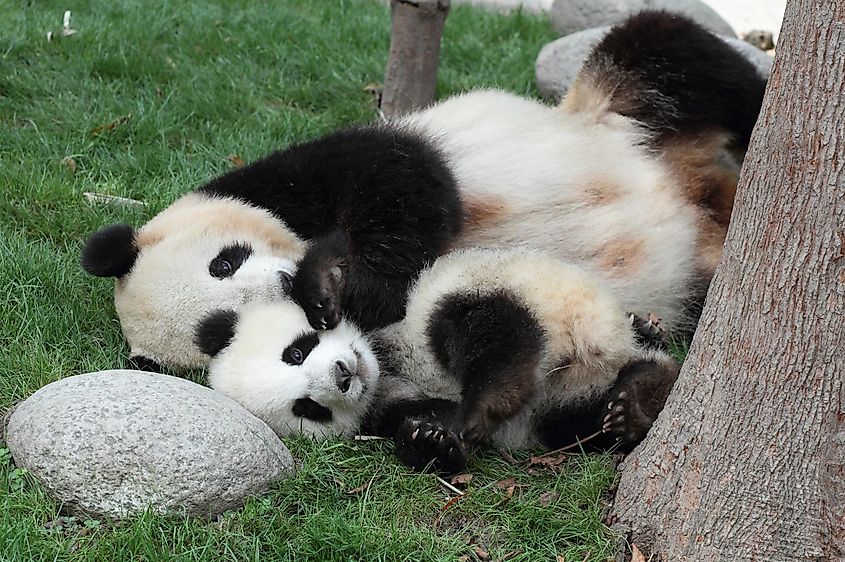
When they are born, tiny baby pandas are blind, have a thin layer of all-white hair, and are extremely vulnerable. It is up to the mother to help protect, hold, and suckle the baby as it grows. A baby panda's eyes don't open until it is roughly 45 days old, and it does not walk until the 75 to 80-day mark, at which point it is still unstable. Because it is still very vulnerable, a baby will live in a den for the first 100-120 days. A baby will drink milk for up to 14 months before starting to eat bamboo, fully weaning from its mother around 18-24 months of age. A mother panda will not breed again until the baby is fully weaned and living on its own. This slow growth process is one of the reasons population growth has been difficult. Interestingly, panda twins are very common, but in the wild, usually only one of the two babies will be cared for. In captivity, however, panda twins can thrive as zookeeps and zoologists are able to assist the mother and ensure both babies get the care and nutrients they need.
Importance
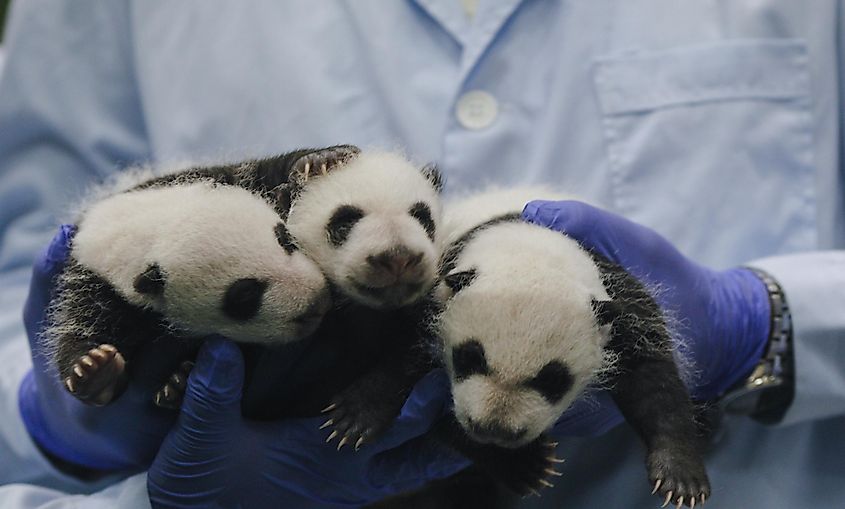
The panda, as such a large prominent animal, has a vital role in its habitat. The areas where pandas live tend to be particularly biodiverse, and because of this, protecting panda habitats protects many other species. These include golden monkeys, ibis, pheasant, and takin, as well as a number of plant species.
Threats
The population of pandas in the wild is somewhere between 1500 and 1800, and the population is considered vulnerable, an improvement from endangered as of 2016, as the population is slowly rising. One of the biggest threats to the panda population is habitat loss. Pandas, in many ways, are the 'poster animals' for habitat loss, as they have been the symbol of the World Wildlife Foundation since 1961. The main habitat for pandas is in the Yangtze Basin in southwestern China, and development and human expansion have broken up or removed large sections of natural habitat. Everything from dams and roads to infrastructure has isolated pandas, cut them off from their food supply, and shrunk their territories.

To combat this, China has created over 50 different panda reserves. However, only 67% of the wild panda population lives in reserves, and only 54% of their habitat is protected. The Wildlife Protection Act was put into place in 1988, and it reduced the impact poaching had on the panda population by banning poaching outright. Thankfully these well-known creatures that have been symbols of both China and wildlife preservation for many years are now being protected, and programs are in place to continue to boost their population. Despite this, though, it is essential to protect natural habitats so that these gentle giants can continue to live and thrive as they were meant to.
